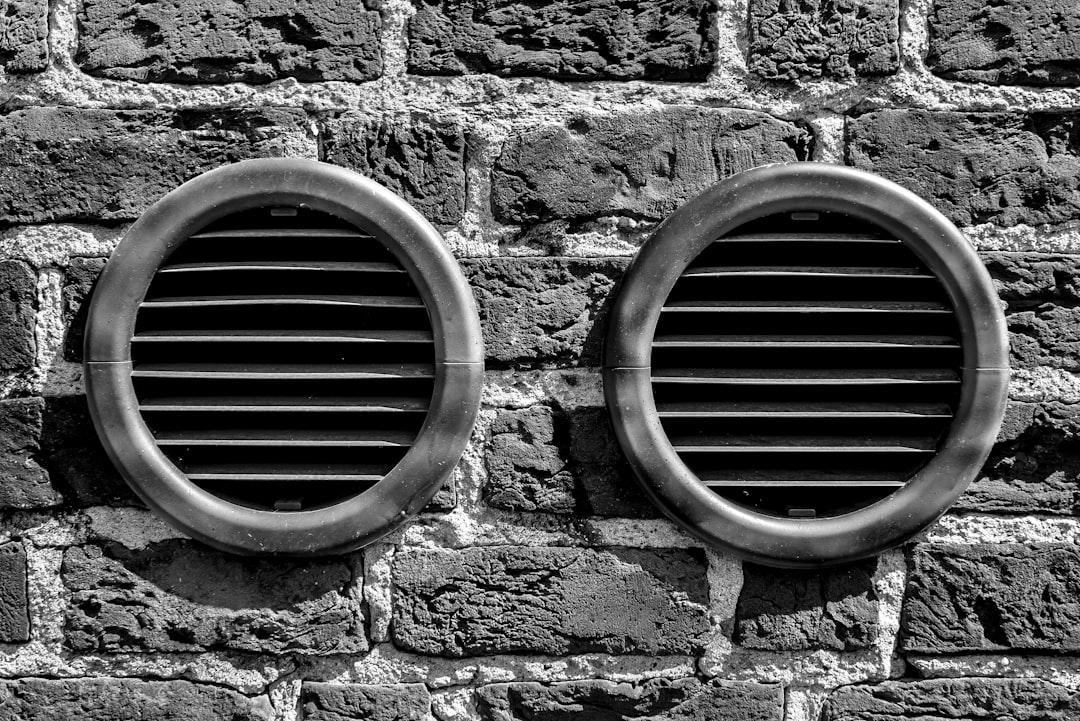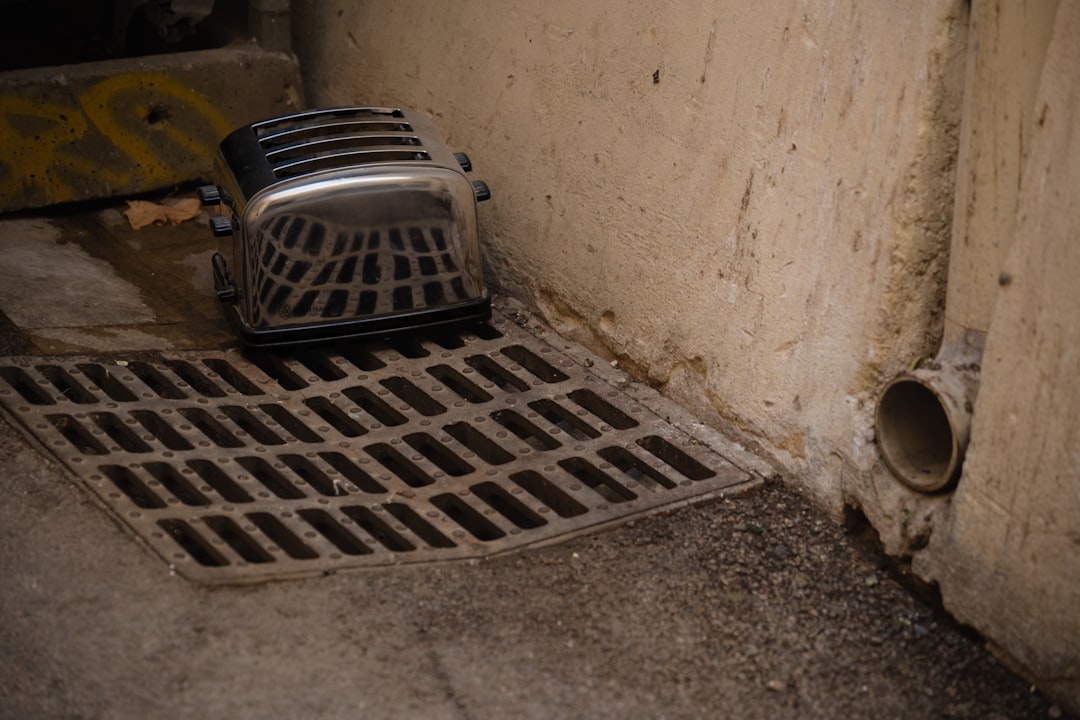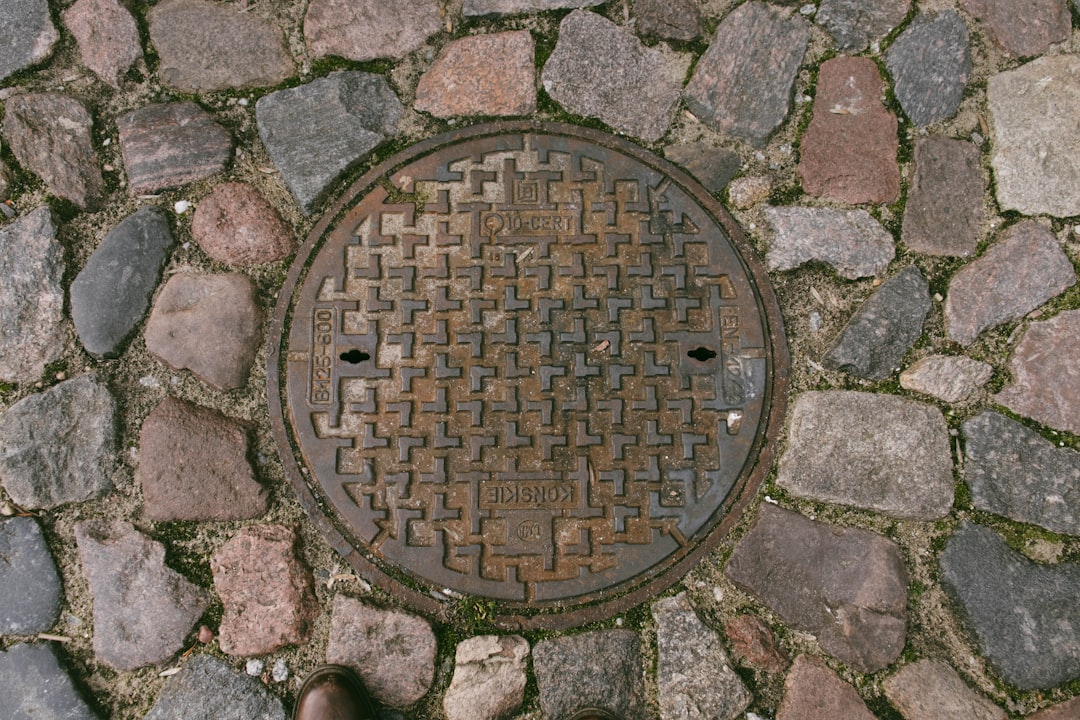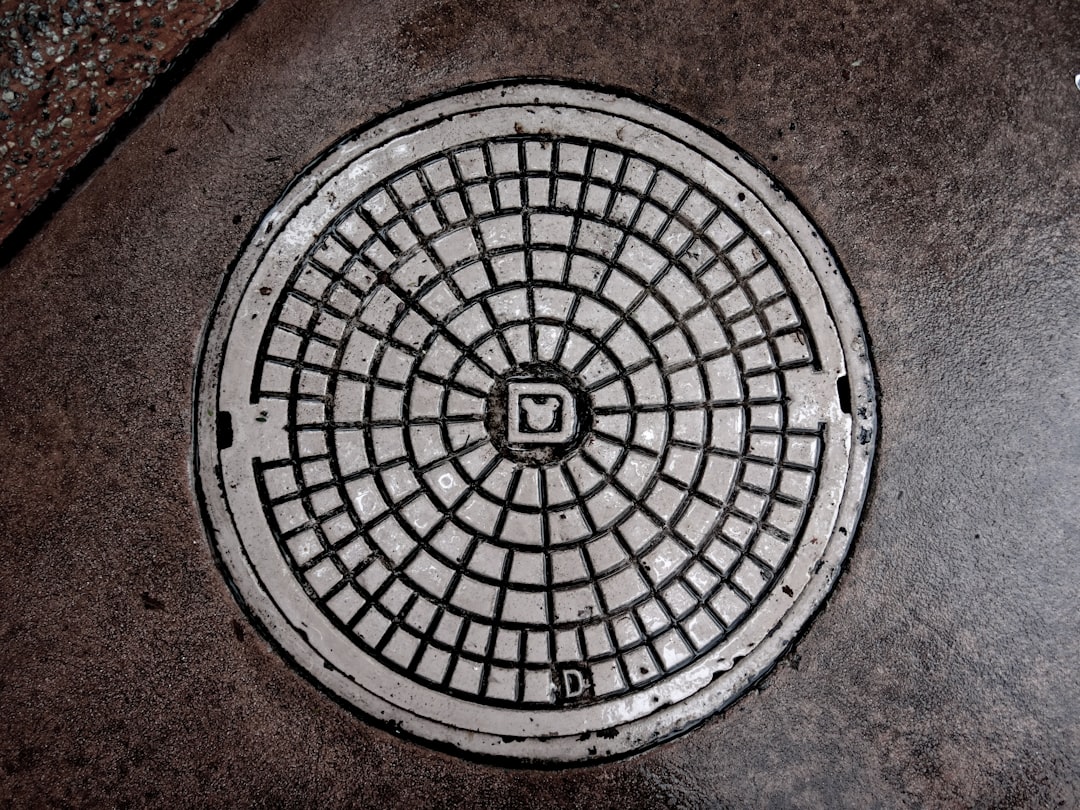

Engage prospects with a scan and streamline customer engagement with FREE QR code marketing tools by Sona – no strings attached!
Create a Free QR CodeFree consultation

No commitment

Engage prospects with a scan and streamline customer engagement with FREE QR code marketing tools by Sona – no strings attached!
Create a Free QR CodeFree consultation

No commitment
The demand for effective water management and waterproofing solutions is reshaping how property owners approach foundational safety and landscape preservation. For businesses offering French drain installation services, there is often a disconnect: high-value prospects engage with offline touchpoints such as site visits, yard signs, or printed brochures but never make it into the CRM or sales process. This gap leads to missed opportunities, especially when prospects seek fast, detailed answers about costs, timelines, and installation benefits but hesitate to fill out lengthy forms or make calls.
Today’s digitally driven world has transformed QR codes from a novelty into a crucial bridge connecting physical outreach to seamless digital experiences. For French drain installation services, QR codes remove friction by enabling property owners to explore drainage solutions, request personalized estimates, and schedule consultations with a simple scan. QR codes ensure that no lead is lost just because someone did not submit a form or enter their details at the jobsite.
When every flyer, yard sign, jobsite report, or brochure becomes a gateway to digital engagement, businesses capture more of those elusive high-value leads and ensure faster response times and smarter data capture. More importantly, QR-enabled campaigns make physical interactions trackable and actionable, allowing service providers to measure and refine what works in their local outreach. Discover how approachable technology can help French drain installation specialists address pain points, streamline customer journeys, and maximize both lead quality and revenue impact.

Manual processes and incomplete tracking often result in valuable prospects slipping through the cracks, whether a homeowner walks away with a brochure, attends a demonstration, or stops by a jobsite. This fragmentation means many interested decision-makers remain untracked and unengaged, costing businesses immediate conversions and future pipeline.
QR codes bridge the gap between these physical interactions and digital outcomes, helping teams capture high-fit leads, reduce lost opportunities, and surface engagement signals that previously went unnoticed. When tied to a thoughtful content strategy, these codes can guide prospects through discovery, education, and booking in a single, cohesive journey. That makes it easier to replace inefficient workflows and offer a professional, responsive experience that builds trust. Explore more ideas in Sona QR’s use case library.
An integrated approach gives French drain installation providers real-time, actionable visibility to enhance their marketing investments and customer experiences.
Property owners increasingly interact with drainage and waterproofing brands through hybrid channels such as seeing a sign, picking up a flyer, or scanning a code on site. Many businesses struggle to connect these moments to their digital funnel, leading to a lack of visibility into lead origins and engagement levels. Without a direct digital bridge, the homeowner’s interest may fade before they find your website or number again.
QR codes in marketing reduce friction at precisely the moments that matter. They remove the need to type URLs, remember phone numbers, or wait on hold. They also provide attribution across physical media, enabling service providers to measure what works in neighborhoods prone to flooding or seasonal water issues. The result is both a better experience for the property owner and better data for your team.
For French drain installation services, using QR codes is a strategic response to how today’s buyers want to be engaged: fast, mobile-first, and with minimal friction.

Many drainage companies struggle to personalize outreach or measure campaign results because their tools are static and disconnected. Selecting the right QR format unlocks more relevant experiences for prospects and better tracking for your team. The good news is that formats can be mixed across placements to serve different needs.
Static codes are sufficient for evergreen resources such as a company brochure or a drainage explainer video. Dynamic codes are ideal for time-sensitive campaigns, rotating offers, or placements where you want to capture scan data and adjust targeting. In French drain marketing, dynamic codes typically deliver the best return because they support A/B testing and real-time updates.
Dynamic QR formats allow real-time content updates and granular tracking, enabling quick campaign pivots and closing the loop on lost prospects. With a platform like Sona QR, you can manage these formats in one place and sync engagement to your CRM.

French drain installation providers need to recognize where offline engagement happens and turn those moments into measurable, revenue-driving opportunities. Property owners who notice your crew working nearby or spot a yard sign are often primed to act, but interest fades if the next step is not obvious. Strategic QR placement ensures that curiosity turns into a captured lead.
To scale efficiently, target placements that intersect with education and urgency. Flood-prone neighborhoods, homes with visible grading issues, and communities with HOA-led landscaping projects are high-yield environments. QR codes placed here can direct prospects to local case studies and neighborhood references that accelerate trust.
Every placement becomes a conversion gateway, reducing lost high-intent prospects while providing the attribution needed to scale what works.

Many businesses experience a disconnect when an interested prospect never becomes a sales opportunity. QR codes create a reliable mechanism to capture intent and deliver the right next step. When tied to segmented landing pages and automation, they can accelerate the path from awareness to booked consultation.
In drainage services, the most effective use cases balance education with action. Homeowners frequently need reassurance that French drains are the right fix compared to alternatives like grading improvements or downspout extensions. QR-enabled content can address that head-on with visuals and simple calculators.
These use cases convert offline interest into data-driven nurture tracks while improving perceived professionalism and responsiveness.
A major challenge for marketers is the inability to segment and retarget audiences from offline interactions. Without tags, you cannot readily distinguish between a homeowner seeking an urgent fix after a storm and a property manager researching options for a multi-unit complex. QR-first journeys solve this by encoding context into each scan.
By deploying unique codes across placements and stages, you create automatic signals for your CRM and ad platforms. This supports more accurate follow-up, better budget allocation, and higher conversion rates. It also reduces wasted effort for sales teams by focusing outreach on the right prospects at the right time.
These tools ensure every scan leads to a tailored follow-up. With Sona QR, each code becomes a smart entry point that builds retargeting audiences based on real behaviors rather than assumptions.
Drainage service providers often run isolated channels such as direct mail, events, and signs. Without a common digital thread, it is hard to attribute results or nurture prospects consistently. QR codes provide that thread by making every surface scannable and every interaction measurable.
A connected funnel means that a homeowner who scans a yard sign, watches a comparison video, and later books a consultation from a direct mail offer can be recognized as the same journey. That level of visibility allows you to personalize, prioritize, and measure with confidence. It also helps marketing and operations coordinate, reducing lag between interest and scheduling.
QR codes serve as the offline onramp to your digital marketing engine. With a centralized platform like Sona QR, you can manage codes, monitor performance, and sync scan data with your CRM and ad platforms for a complete view of the buyer journey.
Launching QR campaigns for French drain services is straightforward when you align tactics with clear outcomes. Start with placements that already get attention, then pair them with landing pages that deliver value in under 60 seconds. Finally, connect everything to your CRM for measurable impact.
The steps below turn best practices into an actionable playbook. Follow them in order, test rigorously, and iterate based on real data. Consistency is key: the more you standardize your QR deployment and tracking rules, the faster you will learn and scale.
Begin by selecting one or two business outcomes to improve immediately. For many drainage contractors, the top priorities are quote requests from high-intent neighborhoods and faster post-event follow-up. If you are already generating traffic but not capturing it, choose a scan-to-estimate use case. If awareness is low, opt for an education-first approach that still includes an easy CTA to book.
Clarify what success looks like. For example, increase estimate request conversions from 3 percent to 7 percent on door hangers in a specific ZIP code or drive 40 booked consultations from a home expo. Setting precise goals ensures you structure the rest of the campaign with the right format, CTA, and analytics.
Static codes are suitable for unchanging assets like your general services brochure. Dynamic codes are better for campaigns that require tracking and flexible destinations. If you need to route different neighborhoods to localized case studies, or you plan to A/B test offers and CTAs, dynamic is the right choice.
Whenever your business outcome relies on measurement, use dynamic codes. They support scan analytics, UTM parameters, and post-print link updates without reprinting collateral. Tools like Sona QR make it easy to manage dynamic codes at scale and connect them to your CRM.
Design the code with a clear quiet zone, strong contrast, and a concise CTA. Avoid placing codes on heavily textured surfaces or areas prone to glare. Use a high-resolution image and size the code appropriately: as a rule of thumb, 1 inch of QR size for every 4 to 6 feet of scan distance.
Test on multiple devices, in different lighting, and from various angles. Validate that the destination is mobile-first, loads quickly, and is dense with value. If your landing page does not help a homeowner decide in under a minute, refine the content before printing.
Place codes where intent peaks. Jobsite signs and door hangers near active projects capture neighbors’ curiosity. Vehicles and rain-response signage capture emergency demand during storms. Event banners and handouts capture consideration-stage interest and need strong appointment-booking CTAs.
Match the landing page to the context. A neighborhood door hanger should route to local testimonials and a prefilled estimate request. An expo banner should route to a booking calendar and a two-minute video explaining French drains versus alternatives.
Execution can fail when tactics are misaligned. Use this structured checklist to ensure each placement aligns with a specific buyer moment and delivers a destination that fits the context. A data-driven rollout boosts yield and closes prospect gaps by focusing attention on what works rather than guessing.
Monitor scans by daypart, neighborhood, and asset. Pair scan counts with downstream metrics like estimate form completions and booked consultations. If a code gets high scans but low conversions, improve the landing page or clarify the CTA. If scans are low, test new placement, design, or incentive.
Establish a cadence for optimization. Weekly reviews can surface quick wins such as adjusting jobsite sign height or swapping a generic CTA for Scan for a free 60-second drainage check. Over time, your benchmarks will guide smarter media buys, route planning, and staffing.

Drainage businesses often rely on intuition due to poor attribution between physical outreach and revenue. Enhanced visibility starts at the moment a QR code is scanned and continues through the buyer journey. The ability to tie a scan to a specific campaign, neighborhood, and outcome changes how teams allocate time and spend.
Granular analytics move your program from guessing to knowing. When your CRM records that a surge of estimate requests originated from a single jobsite sign on a stormy weekend, you can replicate success across other neighborhoods. Similarly, when a specific door hanger design underperforms, you have the evidence to iterate quickly rather than wait for anecdotal feedback.
This tracking transforms lost prospects into a measurable funnel. Sona QR captures real-world engagement, while Sona.com turns that engagement into insights you can act on to make QR part of your performance marketing strategy.
Operational issues like inconsistent capture and untracked referrals can undermine your QR code strategy. Establishing a small set of rules and automations can unlock consistent gains. Focus on controlling what you can: unique codes, measurable destinations, and fast follow-up.
Training matters as much as technology. When field teams and reps know how to talk about QR benefits and set expectations for next steps, scan rates and conversion rates rise. Clear CTAs and transparent privacy messaging build trust, which is essential in home services.
Utilizing these tactics ensures QR investments drive pipeline and long-term relationships. You can generate and track your first codes quickly with platforms like Sona QR. Start creating QR codes for free, then layer attribution and identity resolution with Sona.com as you scale.
Even well-meaning QR adoption can fall short if it is limited to basic forms. The strongest deployments combine education with a clear action and use localized proof to build confidence. Here are practical patterns adapted for drainage specialists that you can replicate and refine.
Aim for short, valuable experiences. Homeowners appreciate rapid clarity on cost ranges, project timelines, and what the installation will disrupt. Deliver that in 60 to 90 seconds, then provide an easy path to book a consultation or request a call-back.
Creative integration not only captures demand, it strengthens expertise and service at every touchpoint. When in doubt, pair each code with a single, benefit-driven promise and deliver on it instantly.
Missteps such as placing QR codes in hard-to-scan locations, linking to generic pages, or failing to update codes can reduce results. Fortunately, a few guardrails eliminate most issues. Design and scannability rules are non-negotiable: size, contrast, quiet zone, and placement drive outcomes as much as messaging.
Ensure the scan destination is built for mobile and context. If a homeowner scans a yard sign, do not send them to your homepage. Send them to a neighborhood-specific landing page with local photos, an FAQ, and a clear request-a-quote CTA. If they scan a maintenance sticker, route them to troubleshooting steps and a service scheduler.
A disciplined approach guarantees each QR touchpoint converts and supports prospects, minimizing lost opportunities and maximizing marketing value.
QR codes are not simply a digital convenience; they represent a strategic evolution for French drain installation services seeking to overcome inefficiencies between traditional outreach and actionable, data-driven engagement. When every flyer, yard sign, direct mailer, and event display becomes a scannable entry point, you capture more demand at the source and reduce drop-off across the funnel.
Integrating QR code analytics with CRM and marketing platforms helps surface, segment, and prioritize previously invisible prospects. That empowers personalized education, faster follow-up, and smarter investments. The future of French drain installation is intelligent, measurable, and aligned with how modern property owners make decisions.
Thoughtful QR code integration lets you redefine your pipeline, nurture relationships, and achieve sustainable success in a competitive market. Start small with one or two high-intent placements, learn from the data, and scale quickly. With tools like Sona QR for code management and Sona.com for attribution, you can connect scans to revenue and build a marketing engine that grows rain or shine.
QR codes have revolutionized the French drain installation services industry by transforming traditional customer interactions into seamless, measurable engagement opportunities. Whether it’s acquiring new clients, enhancing customer communication, or streamlining project updates, QR codes replace outdated methods with instant, mobile-friendly access to essential information and real-time data tracking. Imagine your customers effortlessly scanning a code to view installation guides, service details, or maintenance tips—boosting trust and satisfaction at every step.
With Sona QR, you can create dynamic, trackable QR codes in seconds, update content instantly without costly reprints, and link every scan directly to your business growth. This means smarter marketing, improved client experiences, and clear insights into what drives your success. Start for free with Sona QR today and turn every scan into a new lead, a loyal customer, or a completed project.
French drain installation costs vary, and QR codes can provide property owners with immediate access to pricing ranges and cost calculators to understand estimated expenses.
Installing a French drain helps manage water effectively, protects foundations, preserves landscapes, and addresses issues like flooding, basement dampness, and grading problems.
French drain installation timelines can be quickly accessed through QR codes linking to educational content that sets expectations, typically delivering clarity within 60 to 90 seconds.
Signs include frequent water pooling, basement dampness, visible grading issues, and flooding in flood-prone neighborhoods.
Look for providers who offer easy digital access to estimates, educational resources, and consultations via QR codes, and who track and respond to leads efficiently using CRM integration.
QR codes connect physical marketing materials to digital experiences, enabling quick access to estimates, education, and booking, while capturing valuable lead data and improving follow-up.
Place QR codes on yard signs, jobsite boards, door hangers, vehicle wraps, direct mailers, and event displays where homeowner interest and intent are highest.
Dynamic QR codes are preferred for campaigns needing tracking and content updates, while static codes work for evergreen materials like brochures or explainer videos.
QR codes record scan data like location and time, link scans to specific campaigns, and integrate with CRMs to measure conversions from scan to booked consultation.
Avoid placing codes in hard-to-scan locations, linking to generic pages, and failing to update dynamic codes; ensure clear CTAs, mobile-friendly destinations, and proper code design.
Use Sona QR's trackable codes to improve customer acquisition and engagement today.
Create Your FREE Trackable QR Code in SecondsJoin results-focused teams combining Sona Platform automation with advanced Google Ads strategies to scale lead generation

Connect your existing CRM

Free Account Enrichment

No setup fees
No commitment required

Free consultation

Get a custom Google Ads roadmap for your business






Launch campaigns that generate qualified leads in 30 days or less.
